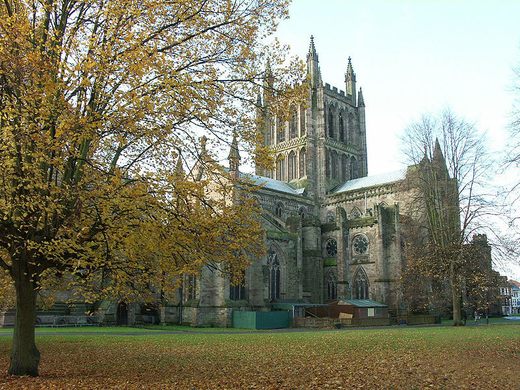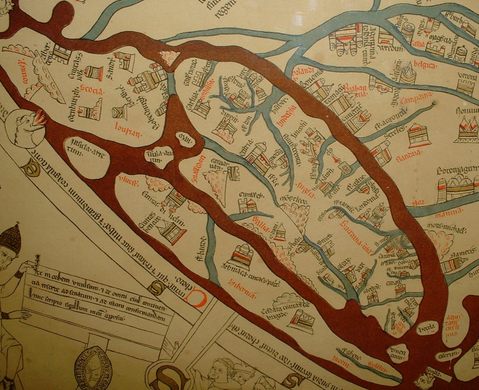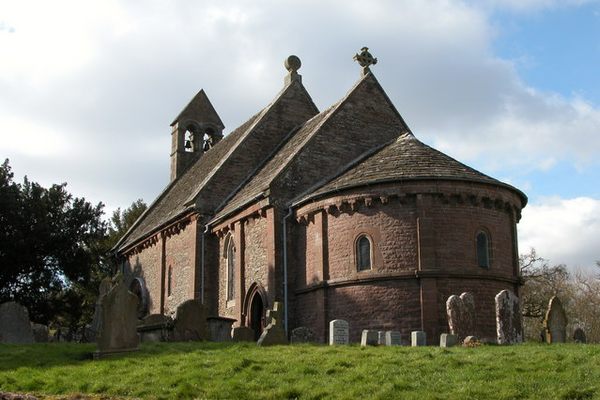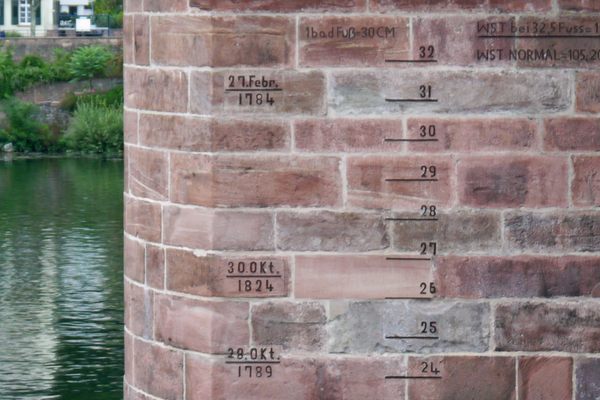Drawn at the close of the 13th century on a single calfskin, the Hereford Mappa Mundi has survived 700 years and is now one of the most significant historical maps in the world.
The map was designed from the start not for practical navigation, but as an inspiring work of art. Following the medieval tradition, the circular map shows the known world with Jerusalem at its center. In some places it is surprisingly accurate, in others, shockingly off-base. The labels for Europe and Africa are transposed, for example. It is full of curious anomalies as well, from mysterious animals and Biblical scenes, to the fanciful and freakish unknown peoples of far-off lands. All told, the map includes around 500 illustrations of people, places, animals, cities, and towns, including 15 Biblical events and 8 taken from classical mythology.
It was most likely created in Lincolnshire or Yorkshire and has been in the possession of the cathedral at Hereford for nearly, if not all, of its life. The layout is similar to other surviving Mappa Mundi of the period, such as the Psalter Map at the British Museum, but it remains a mystery where the mapmakers originally drew their inspiration. Scholars examining the Hereford map have identified at least a dozen sources for the labels and descriptions that appear on the map.
It may have been inspired by another massive Mappa Mundi known as the Ebstorf Map, which was drawn around 1239 and was nearly six times the size of the Herford Map. Although copies exist, the original Ebstorf Map was destroyed in the bombing of Germany in WWII, leaving the 5 by 4 foot Hereford as the largest known surviving map of the era.
It is housed in the same cathedral as the famous Hereford Chained Library, one of the very few medieval chained libraries still extant and the largest collection of its kind.



















Follow us on Twitter to get the latest on the world's hidden wonders.
Like us on Facebook to get the latest on the world's hidden wonders.
Follow us on Twitter Like us on Facebook